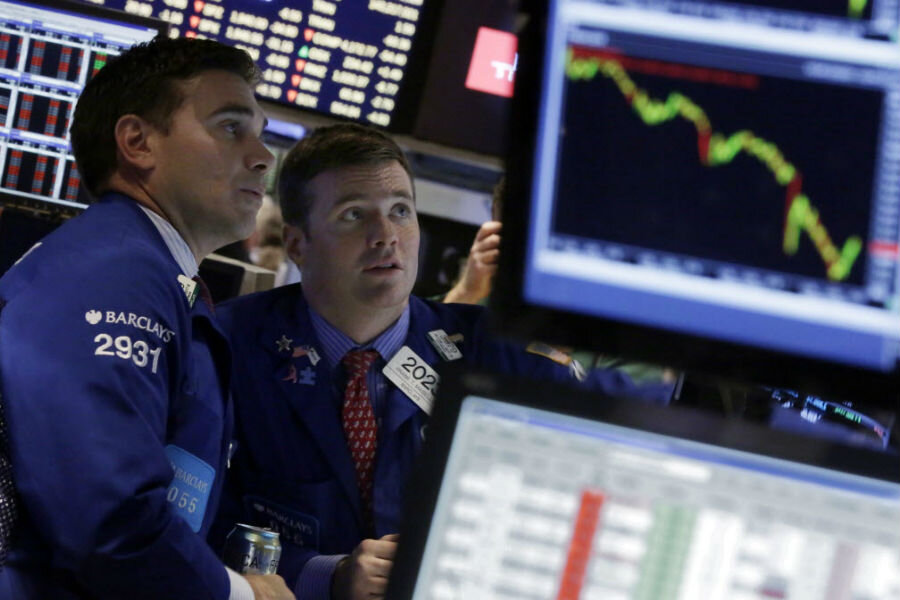Stock markets on edge: How big are the risks in global economy?
| Washington
Tremors in global stock markets are a sign of risk in the world economy, but how much risk?
US stocks stabilized a bit Thursday morning, with the Dow Jones Industrial Average above the 16000 level after spending some significant time below that level Wednesday. But the Dow is now in negative territory for the year so far, after being up more than 4 percent just a month ago.
Stocks outside America have been doing even worse. Losses for the past month total about 8 percent in the Dow Jones Global Total Stock Market Index, which includes both US and non-US companies.
But many forecasters warn against taking the cue that it’s time to panic.
“We share the view that economic prospects are only mediocre, and that the outlook for the euro-zone has worsened. But there has not been a sea change more generally in past weeks,” writes Paul Ashworth, chief North American economist at Capital Economics, in a report to clients.
The International Monetary Fund gave a similar assessment in releasing its latest outlook this month. The IMF took its forecast for world gross domestic product (GDP) down a notch for both 2014 and 2015. But the big picture in its report is still “a rebound in growth for both advanced economies and emerging markets,” supported by stimulative monetary policies and by fiscal policies that generally don’t involve severe austerity.
The IMF now sees global GDP growth of 3.3 percent for this year and 3.8 percent in 2015, adjusted for inflation. That’s based on expectations of modest growth in the US (2.2 percent in 2014), a sputtering eurozone (0.8 percent growth), and tepid growth in emerging markets (4.4 percent) compared with their stronger performance in the past few years.
IMF Managing Director Christine Lagarde was blunt in an Oct. 2 speech, calling the ongoing recovery from recession “disappointing” and “brittle, uneven, and beset by risks.”
But the risk she emphasized was not a new recession but “that the world could get stuck for some time with a ‘mediocre’ level of growth.”
She also acknowledged the risks posed by hot spots and crises: Russia-Ukraine tensions, instability in the Middle East, and the public-health challenge of Ebola.
Such challenges could affect the world economy.
But large effects aren’t the most likely scenario, argues Andrew Kenningham, a senior global economist at Capital Economics. Any spillovers from countries like Russia, Iraq, and Syria to larger economies “are likely to be modest,” he wrote in an Oct. 6 analysis. Russia, for example, accounts for just 2 percent of global trade.
And lately, oil prices have been falling (on the weakening outlook for global growth) rather than spiking on fears that Russian or Saudi supplies will be hit by geopolitics. A severe upward spike in oil prices could derail global growth.
A bigger risk, as Mr. Kenningham sees it, could lie in China or Europe. Political developments in Europe could revive doubts about whether the currency zone will last. And China’s growth could take a hit if the protests in Hong Kong are violently suppressed.
So, yes, the global economy faces real risks.
But for now, the outlook remains one of at least tepid growth. The travails of European nations (and a struggling Japan) as important caveats to that scenario, while the US and many emerging market nations are brighter spots.
Ms. Lagarde, for her part, called for policymakers around the world to step up to make “new momentum” rather than a “new mediocre” the global norm. She said the ideal policies vary from place to place. Reforms to encourage business investment, draw more people into labor markets, and expand government-funded infrastructure could help boost growth, she said.








